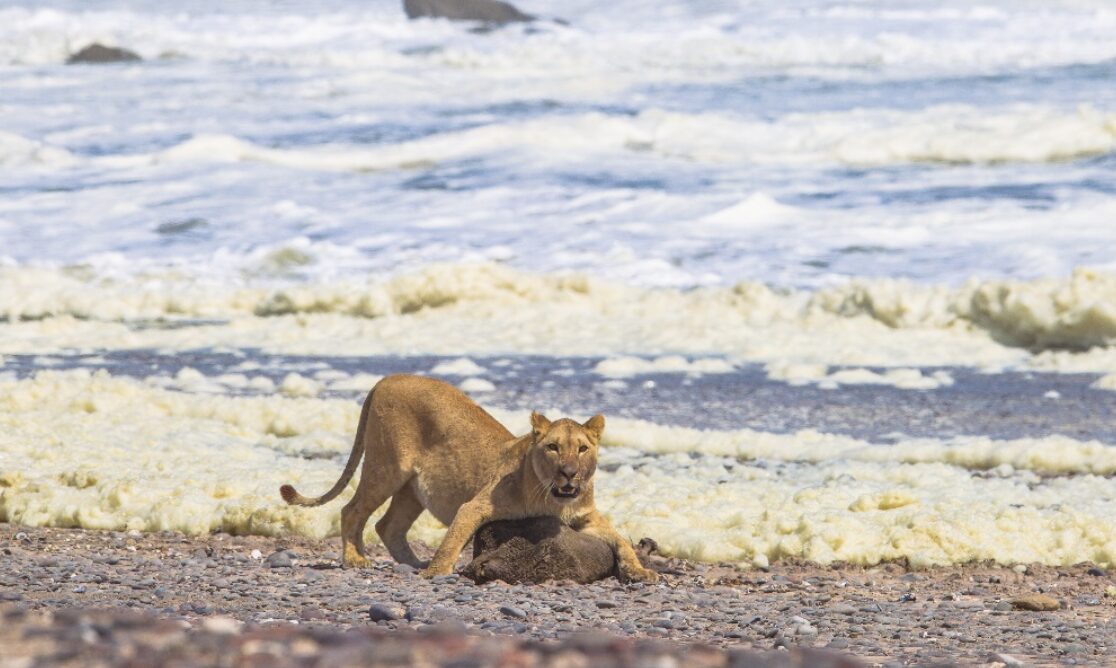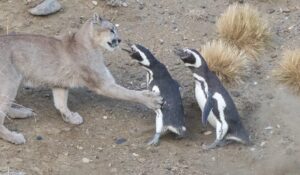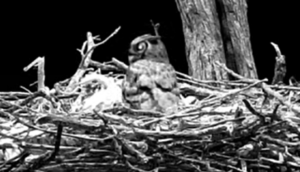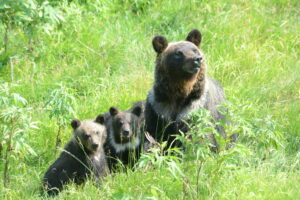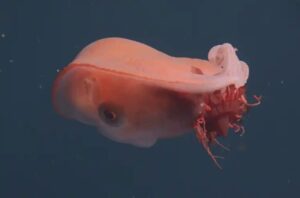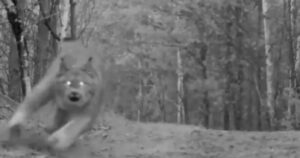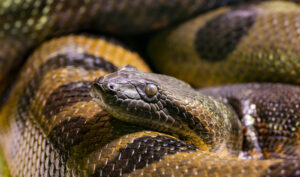Adaptability is the trait that, before all others, allows a species to survive when its environment is changing. At the end of the last Ice Age, grey wolves turned to different prey, allowing them to survive while the mortally inflexible dire wolf died off. A population of Namibian lions has, seemingly, taken this lesson to heart.
Where once they roamed the Namib desert, now they prowl the Atlantic beaches. Meet our planet’s only known maritime lions.
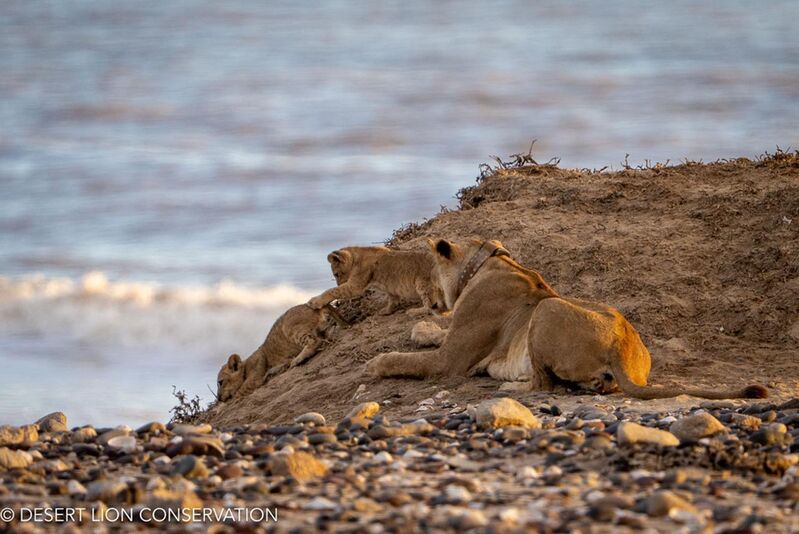
A lioness designated Xpl-109 is raising two cubs on the Atlantic coast. Photo: Desert Lion Conservation
What’s old is new again
Namibian desert lions have endured decades of changing environments and difficult human-lion relationships. Into the mid-20th century, there was a firmly established population of beach-dwelling, seal-hunting lions. But farmers and tourists killed them in droves, so they retreated into the arid Namib Desert.
Namibian desert lions are famed for their endurance. They can travel great distances without water and food, hunting at night and using complex ambush strategies. But ongoing droughts made their desert retreat increasingly inhospitable. After abandoning the seaside decades earlier, descendants of these beach lions began returning to the coast.
The first few lions appeared in 2002. But conservationists worried that their unique hunting behavior, targeting seals and seabirds, had been lost forever. The lions were back on the Skeleton Coast, but they weren’t hunting in the sea.
Then, over a decade after they returned, three young lionesses (nicknamed Alpha, Bravo, and Charlie) began rediscovering the ancient maritime hunting techniques. Now, a small population of lions is living, hunting, and even breeding on the Skeleton Coast again.
“Their resilience is a lesson to us all,” photographer Griet Van Malderen told the BBC. “To face change, to adapt, and to act before it is too late.”
Van Malderen has been following the coastal lions for years, observing and recording their behavior.
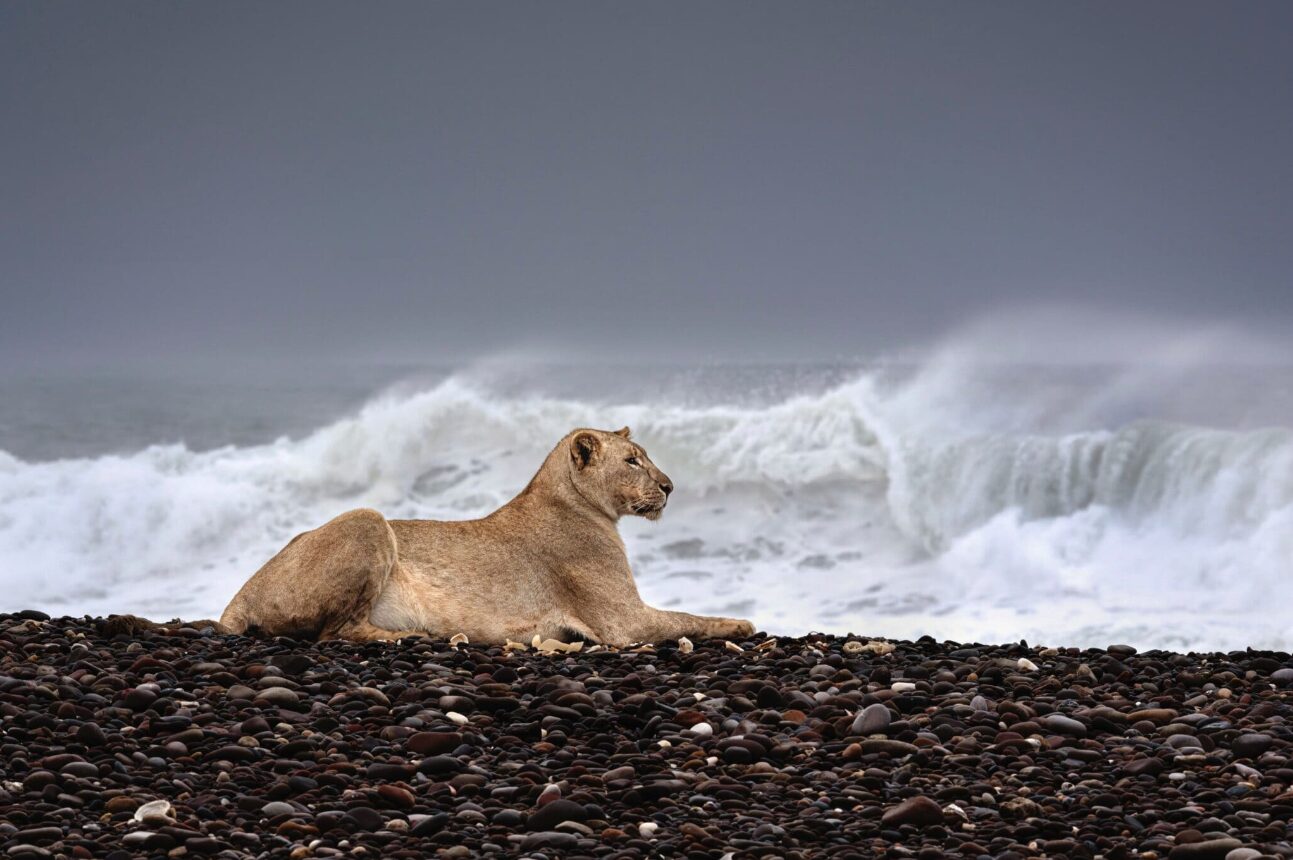
Currently on display in London’s Natural History Museum for the Wildlife Photograph awards, this photo by Griet Van Malderen shows Xpl-151 or ‘Gamma.’ Photo: Griet Van Malderen
Daily lives of maritime lions
A recent study into the lions’ behavior and diet confirmed that they had, indeed, re-learned ocean hunting techniques. Three young lionesses killed two flamingos, 60 cormorants, and 18 seals in a year and a half. Drought, habitat loss, and human encroachment drastically decreased the availability of land-dwelling prey. By switching to an around 80% maritime diet, the lions avoided starvation.
As exciting as this is for lions and lion-enjoyers, there are some potential concerns. Fishermen and livestock farmers didn’t go away, and they remain a threat to the lions, which in turn threaten their safety and livelihoods. Tourists, likewise, are a potential source of conflict.
In an attempt to protect people and lions from each other, conservation group Desert Lion Conservation collaborated with Namibia’s Ministry of Environment, Forestry, and Tourism to put up a “geofence.”
The geofence is not an actual fence. It’s an invisible border around a 40km swath of coast. When one of the lions, which are fitted with tracking collars, crosses the border, it sends out an alert to clear the area.
Now that Namibia’s drought has finally broken, terrestrial prey species will likely return. But it remains to be seen whether the maritime lions will follow them back to the desert or stay in their new coastal home.
